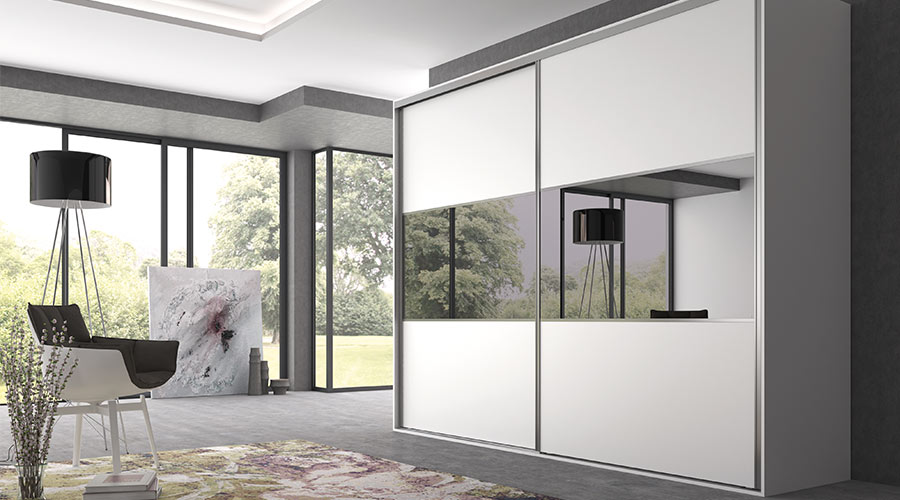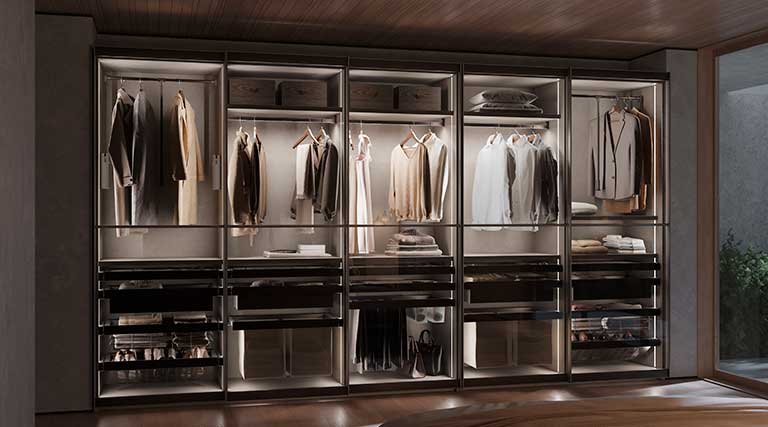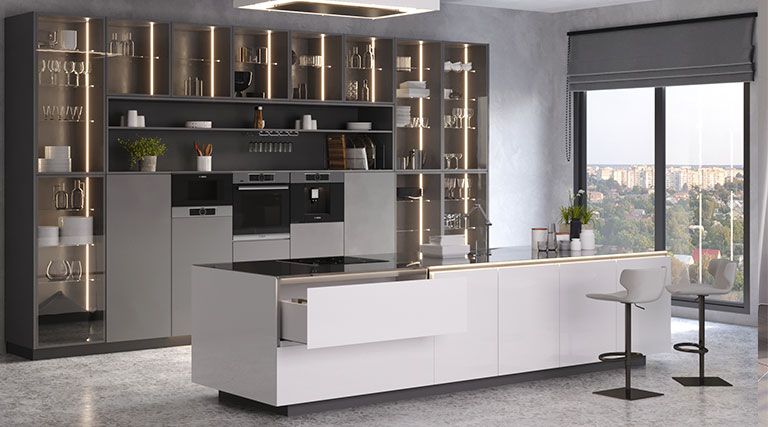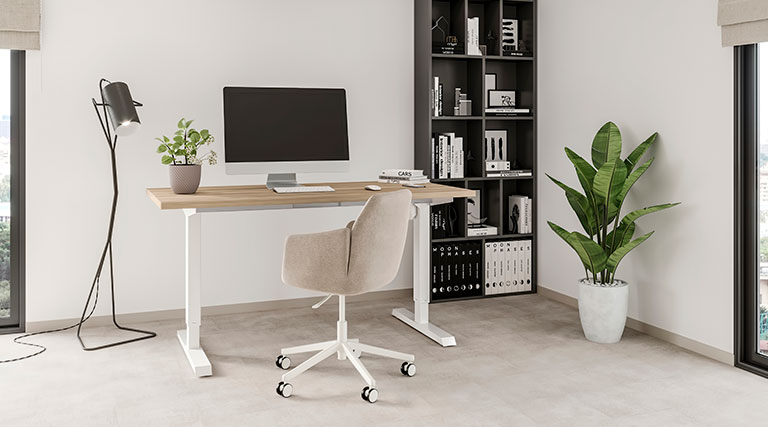We have slid cabinet doors a thousand times, but we rarely think about the mechanism that makes those panels move smoothly. Built-in closet kits are that marvel that helps you close and open your closet with total comfort.
Sometimes, they are the headache of any person. They get stuck, come off the rails or simply break. That’s why we want to provide you with a small guide to everything that has the best quality and functionality kits.
From Emuca we guide you, supported by all our experience, providing solutions in furniture, accessories and complements for your home.
Built-in closet kits, what should they look like?
The kits for built-in cabinets are sets of millimetrically manufactured parts, which support the cabinet doors or panels, in order to make the closing and opening of the cabinet smoother.
They are used so that these panels or boards do not get stuck in the guide grooves of the cabinet. They also serve the purpose of being a support for those panels that, due to their dimensions, become heavy.
They must be light but strong, very well designed to avoid jamming and made of high quality materials. In addition, they must be adaptable to the various dimensions of existing furniture. The kits for built-in cabinets can be double, with brakes tocontrol the speed of closing and opening of the doors and with different bearings, depending on the characteristics of the furniture.
They are also classified by their installation position, as top only, bottom only or bottom and top at the same time. Logically, this characteristic will depend on the weight of the board to be moved.
Materials
The best quality built-in cabinet kits are manufactured from corrosion-resistant, lightweight, yet strong, durable and warp-resistant materials, as well as robust in their load-bearing capacity in order to meet the support of the panels.
You can get them at:
- Steel: Proven quality, stainless and alloy material for strength and durability after years of constant use.
- Aluminum: Lighter alloy material than steel, with real malleability and adaptability, in addition to being anticorrosive.
- Plastic: This material is used in the kits for built-in cabinets, especially in the coating of the bearings and some seals that need to be protected.
What elements should the cabinet kits have?
Depending on the model, these elements or features may vary, but some components are essential. Among them are:
- Rails or profiles: These are metal rods on which the bearing carriages are installed. These are placed at the top and bottom of the cabinets, and are embedded in the cabinets. For this reason, these kits indicate the millimeters of thickness that the panels must have so that these rails do not protrude.
- Bearing carriages: These are the complements where the wheels or bearings are located. These elements are made of alloys such as steel and their wheels are made of plastic or steel. They allow the boards to slide smoothly and continuously. The most sophisticated systems include anti-derailment systems and adjustable anti-skip stops on the upper carriage.
- Braking devices: These are retaining elements that are placed on the upper part of the door, and have hydraulic pistons for gradual, smooth and accurate closing. This system supports weights from 30 kg to 50 kg.
- Hinges: In sliding systems it is unusual to get hinges, but Emuca has the “Twofold” door locking system, which joins both the sliding lock and the hinges that hold the doors. This system emulates the shape that the panels of the folding screens take, folding and unfolding the leaves of the cabinet doors.
- Fittings: Are all those accessories that make up the kits for built-in cabinets. Among them we can find screws, nuts, Allen keys, dust covers, among others.
What do I need to consider to get the best out of these systems?
As you have seen, these kits have many elements. However, the most important thing to acquire the best one is to make sure that the system guarantees adaptability to the board of your cabinet and that it can support the weight of the same.
You must also take into account the thickness of the panel where you will place the rails, so that they are recessed and there are no installation problems. These may need 16 mm or 18 mm, as a general rule.
In a nutshell
These kits are essential for the proper functioning of the closure of your cabinets, so it is important to always check each of the elements that make up the total set of kits for built-in cabinets.
From the manufacturing materials to the braking system is important: knowing these small details, Emuca has the systems technologically adapted to your needs, so that you can choose the most optimal kits without sacrificing style, design and beauty.







